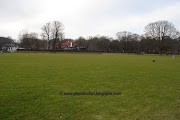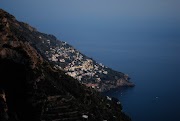Articles
Ceylon Calling - Reasons to Visit Now
Pristine
jungles, emerald beaches, heritage cities, carpets of tea
plantations, rich culture - Sri Lanka is beautiful. Find out the
other reasons to visit.
Sri Lanka, a tiny teardrop island in the Indian ocean, is a destination for everyone. One can only wonder at the sheer variety of places packed into this little jewel. Being a tropical country, Sri Lanka is sun-kissed for most of the year. Peace has recently returned to this paradise after the bloody civil war between the government and the Liberation Tigers of Tamil Eelam ended in 2009. Here are some of the reasons to head to Sri Lanka this winter.
The Climate The best season to visit Sri Lanka is between December and March. This time is known to be dry, although sporadic showers are not unheard of. This season attracts a large number of visitors and the hotels and resorts tend to be full; reservations must be made well in advance.
Accessibility and Affordability The Electronic Travel Authorization System offers official authorization for a short visit to Sri Lanka online. This is a simple process, effective from January 2012. More information can be found at the official site. The entire country can be covered in just a few days. The compact size and easy access make the country a unique destination. To get around, there are options from private helicopters to the ubiquitous trishaws (tuk-tuks). Sri Lanka is an affordable destination with tours and accommodation in wide ranges. Sri Lankan tourism has recently introduced home stays and bungalows programmes, which help you to experience the culture at a reasonable price.
You're never far away from the sea with more than 1,300 kilometres of sandy beaches on the island. Bentota and Beruwala have some of the best beach resorts. They offer a range of water sports too. Unawatuna beach is a picturesque stretch of golden sands, voted as one of the 'Top Ten Beaches of the World' by Discovery Channel. Pasikuda and Kalkuda are untouched beaches with calm waters. There are many other beaches: Kosgoda to watch the turtles, Welligama to Tangalle Bay for the rugged rocks and coconut groves, Pigeon Island for the coral reefs and pigeons, Alankuda beach for dolphin and whale watching, and Arugam Bay for surfing.
The very essence of Sri Lanka is formed from Buddhism and Hinduism; the culture is influenced by the colonial rules of the British, the Portuguese and the Dutch. Sri Lanka's culture can be experienced from the warm people, music, traditional arts, architecture, cuisine, and cricket. The essential hill county vacation calls for a visit to the velvety tea plantations of Nuwura Eliya. There are ballooning, rafting, diving, and rock climbing to get your adrenalin going. For those in pursuit of relaxation, there are meditation centres and Ayurveda resorts. Shopaholics can find brassware, jewellery, gems, handicrafts, fabrics, spices, and much more.
Cuisine The Sri Lankan cuisine is cruelly underrated. It is rich, delicious and has influences from the Dutch, the Malays and the South Indians. Rice and curries form the staple diet similar to the neighbouring countries; sadly, the cuisine did not get its fair share of popularity as the other Asian cuisines. Coconuts are generously used in the dishes, so are the abundant spices and fishes. The hoppers, called appa in Sinhalese, are thin, cup shaped pancakes made of rice flour and coconut milk; they are spongy in the centre and eaten with curries or sambhol, a chili based sauce. The string hoppers are similar to vermicelli; they are made of rice-flour dough and served similar to the hoppers. Pittu is another traditional dish borrowed form the Malays. Lamprais is a Dutch dish made of rice, meat stock and vegetables. The use of banana leaves for baking gives it a distinct flavor. Kirbath or the milk rice, wattalappam, a rich pudding of Malay origin and kiri peni, made of curd and honey are the special desserts from Lanka. Toddy and Arrack are the locally brewed drinks; there are also thambili and kurumba -- fresh coconut drinks for a healthier option. Tea remains a popular drink, thanks to the lush plantations. Some of the fruits found here are: mangosteens, rambutans, durians, wood apples, passion fruits and bananas.
.JPG) |
| Reservoir, Sri Lanka |
Sri Lanka, a tiny teardrop island in the Indian ocean, is a destination for everyone. One can only wonder at the sheer variety of places packed into this little jewel. Being a tropical country, Sri Lanka is sun-kissed for most of the year. Peace has recently returned to this paradise after the bloody civil war between the government and the Liberation Tigers of Tamil Eelam ended in 2009. Here are some of the reasons to head to Sri Lanka this winter.
The Climate The best season to visit Sri Lanka is between December and March. This time is known to be dry, although sporadic showers are not unheard of. This season attracts a large number of visitors and the hotels and resorts tend to be full; reservations must be made well in advance.
Accessibility and Affordability The Electronic Travel Authorization System offers official authorization for a short visit to Sri Lanka online. This is a simple process, effective from January 2012. More information can be found at the official site. The entire country can be covered in just a few days. The compact size and easy access make the country a unique destination. To get around, there are options from private helicopters to the ubiquitous trishaws (tuk-tuks). Sri Lanka is an affordable destination with tours and accommodation in wide ranges. Sri Lankan tourism has recently introduced home stays and bungalows programmes, which help you to experience the culture at a reasonable price.
Activities
for All Sri Lanka resonates with 'one size fits all'. The
country caters to every traveller: adventurers, nature and wildlife
enthusiasts, average tourists, backpackers, romantic travellers,
connoisseurs of art and history, etc. For a rendezvous with history,
visit Polonnaruwa, Sigiriya, Annuradhapura, Dambulla, and Galle. The
Temple of the Tooth in the city of Kandy houses one of Buddhism's
sacred relics. There are more than nine national parks and two marine
national parks in Sri Lanka. Asiatic elephants, wild boars, leopards,
water buffaloes, and blue whales are some of the animals that call
Sri Lanka their home. Yala National Park is a famous destination for
ecotourism and it can bring out the best photographer in you. It's
known for its variety of birds, reptiles and highest concentration of
leopards. Serious bird watchers can rejoice in Sri Lanka.
You're never far away from the sea with more than 1,300 kilometres of sandy beaches on the island. Bentota and Beruwala have some of the best beach resorts. They offer a range of water sports too. Unawatuna beach is a picturesque stretch of golden sands, voted as one of the 'Top Ten Beaches of the World' by Discovery Channel. Pasikuda and Kalkuda are untouched beaches with calm waters. There are many other beaches: Kosgoda to watch the turtles, Welligama to Tangalle Bay for the rugged rocks and coconut groves, Pigeon Island for the coral reefs and pigeons, Alankuda beach for dolphin and whale watching, and Arugam Bay for surfing.
The very essence of Sri Lanka is formed from Buddhism and Hinduism; the culture is influenced by the colonial rules of the British, the Portuguese and the Dutch. Sri Lanka's culture can be experienced from the warm people, music, traditional arts, architecture, cuisine, and cricket. The essential hill county vacation calls for a visit to the velvety tea plantations of Nuwura Eliya. There are ballooning, rafting, diving, and rock climbing to get your adrenalin going. For those in pursuit of relaxation, there are meditation centres and Ayurveda resorts. Shopaholics can find brassware, jewellery, gems, handicrafts, fabrics, spices, and much more.
Cuisine The Sri Lankan cuisine is cruelly underrated. It is rich, delicious and has influences from the Dutch, the Malays and the South Indians. Rice and curries form the staple diet similar to the neighbouring countries; sadly, the cuisine did not get its fair share of popularity as the other Asian cuisines. Coconuts are generously used in the dishes, so are the abundant spices and fishes. The hoppers, called appa in Sinhalese, are thin, cup shaped pancakes made of rice flour and coconut milk; they are spongy in the centre and eaten with curries or sambhol, a chili based sauce. The string hoppers are similar to vermicelli; they are made of rice-flour dough and served similar to the hoppers. Pittu is another traditional dish borrowed form the Malays. Lamprais is a Dutch dish made of rice, meat stock and vegetables. The use of banana leaves for baking gives it a distinct flavor. Kirbath or the milk rice, wattalappam, a rich pudding of Malay origin and kiri peni, made of curd and honey are the special desserts from Lanka. Toddy and Arrack are the locally brewed drinks; there are also thambili and kurumba -- fresh coconut drinks for a healthier option. Tea remains a popular drink, thanks to the lush plantations. Some of the fruits found here are: mangosteens, rambutans, durians, wood apples, passion fruits and bananas.
Sri
Lanka is an excellent choice to escape the depressing times of the
winter. The pleasant climate, easy accessibility and the traditional
gastronomy are the main reasons to visit this gem.



0 Comments